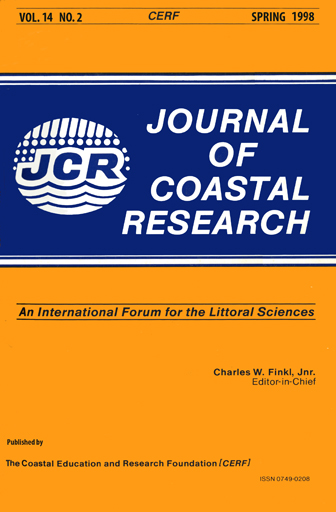The Contribution of Ballistic Momentum Flux to the Erosion of Cohesive Beds by Flowing Water
Keywords:
Solid-transmitted stresses, erosion, mudflatAbstract
An adaptation of Bagnold's (1936) method of estimating solid-transmitted shear stresses has been used to define the ballistic momentum flux of aggregates saltating over a cohesive bed. Results from in situ observations of these aggregates show that up to 7% of the mass transport of sediment was in saltation (under type II erosion), and took place in the form of irregular shaped aggregates that were up to 6.8 mm in diameter. The total momentum flux/unit area/unit time (shear stress) was O (10-1%) of the fluid-transmitted bed shear stress. Nevertheless, observations showed that corrasion of the aggregates took place, with "sediment splashes" observed during aggregate impacts with the bed. This led us to believe that the impact forces (the impulse) beneath the aggregates was higher than the erosion threshold of the bed material (1.5-2.0 Pa) and aggregate strength. By normalising the ballistic momentum flux by the estimated area of impact, shear stresses up to 9.5 Pa were determined which were sufficiently high to explain the observed erosional behaviour. These stresses were applied over an impact area of 0.009 m2/m2 . The estimated effect on the net resuspension from the bed is small but significant (3%). Thus, it appears that saltating aggregates can contribute to the erosion threshold and erosion rate of cohesive beds in the Bay of Fundy at high current speeds (> 0.35 m/s).


